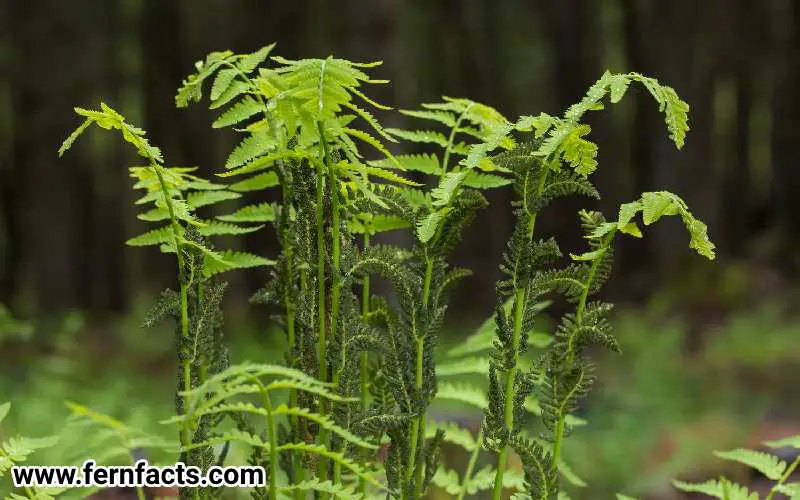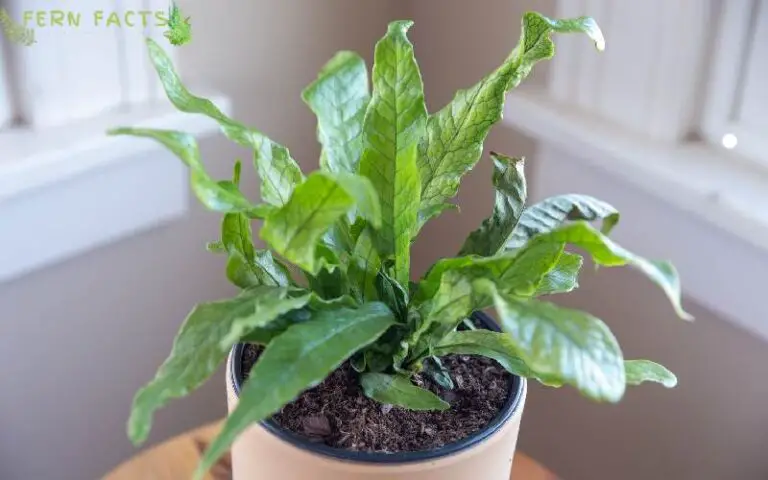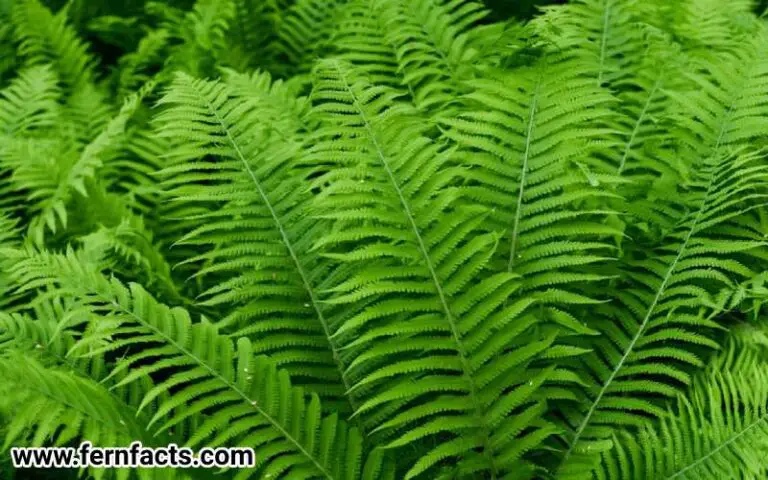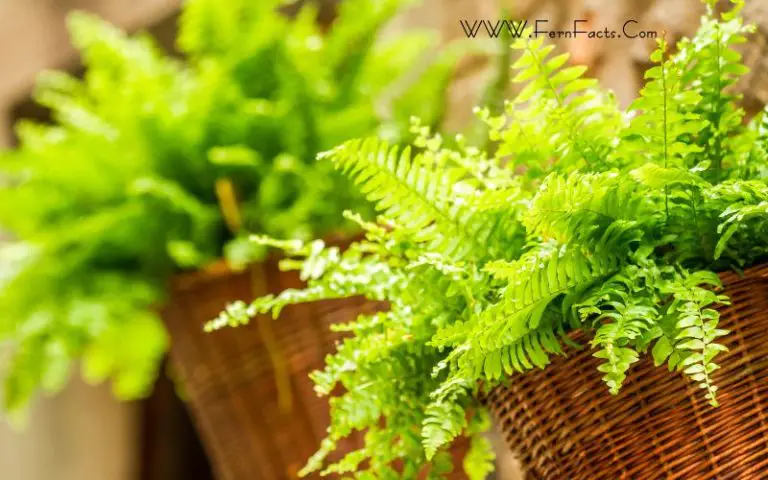How To Care For Interrupted Fern Plants
Are you a workaholic person but have a soft shield for a fern plant? Want to know such ferns that don’t need much attention and care?
Well, Interrupted ferns are one of the invasive deciduous plants in the northwest regions that are low maintenance. They are very easily growing ferns which have rapid growth habits.
If you want to know more about these fern’s features, then follow this article from top to bottom. In this article, I’ll illustrate to you the Interrupted Fern’s overall view along with its characteristics.
Similarly, I’ll also give you its pruning tips, and propagation tips and also share its economic uses in many places. By understanding its characteristics, hopefully, you can grow these Interrupted ferns in your home garden.
Interrupted Fern
- Botanical name: Osmunda claytoniana
- Plants: Deciduous
- Family: Osmundaceae
- Native range: Eastern Asia, eastern United States, Canada.
- Shade requirements: partial shade
- Height: up to 2 to 3 ft
- Width: 60 to 90 cm
- Soil pH: acidic
- Soil type: moist, well-drained
- Hardiness: 3,4,5,6,7,8
- Tolerance: Wet soil, full sun, rabbit resistant, deer resistant
Interrupted ferns are famous northwest deciduous ferns. Inside northwest regions, these ferns are widely distributed in Eastern Asia, the United States, and Canada. It’s been recorded on the earth for more than 200 million years.
These ferns have pale green sterile fronds and the middle one is fertile fronds. But somehow the middle fronds become interrupted by the brown leaflets in the middle of their growing season (spring).
These Interrupted fronds gradually fall off by the mid-summer seasons; thus the name is the Interrupted fern. Generally, these ferns can grow around 2 to 3 ft in height and 60 to 70 cm in width.
These ferns prefer damp moist and indirect sunlight to grow. Note that they are highly recommended ferns for alkaline soil. They cannot tolerate alkaline soil much, rather they thrive in acidic and neutral soil along with a moist atmosphere.
Similarly, these ferns can also tolerate wet soil conditions for their healthy growth. Besides, a dappled atmosphere with indirect sunlight would be the best fit for them to thrive in nature as well.
Many gardeners or cultivators use these ferns as garden shade borders or coverers because of their invasive growth nature. These Interrupted ferns will easily spread and cover the entire place if they are not pruned or trimmed.
Interestingly, Interrupted ferns can tolerate full sun exposure, their roots are moist enough. Since they are wet adaptable ferns, their moisture sustains them to tolerate sunlight for a longer period of time.
Growing Tips of Interrupted Ferns
Since they are invasive plants, they are very easy-growing ferns in normal words. They are low-maintenance and want less attention to thrive.
However, their a few basic requirements for growing must-have things for them to thrive. Here are those:
Light Requirements
Similar to their native habitats, these Interrupted ferns prefer partially shaded places to fully shaded places.
Therefore, you can put your Interrupted ferns in a north-facing window or in a dappled shade place if it’s an indoor plant.
And for outdoor plants, plant them under tree canopies or under big trees so that they can get indirect sunlight through it, not the direct one. Although they can tolerate sunlight for some period of time as they are wet adaptable ferns.
So as long as they are hydrated, they can tolerate full sun; however full sunlight conditions can burn their pale green fronds. That is why, indirect sunlight is the best light condition for ferns to thrive.
Water
Interrupted ferns are fond of moist soil with a good drainage system. They are also wet-loving ferns, so they can tolerate wet conditions around themselves.
Still, excessive wet situations can cause root rot after a while. Therefore, moderately wet conditions with dampness would be an ideal soil texture for these Interrupted ferns.
A generous amount of watering or weekly watering is enough for them as long as their roots are moist and hydrated enough.
Soil
Similarly, they prefer moderately acidic soil for their natural growth. They can also tolerate clay soil and loam soil. However, they cannot tolerate alkaline soil since it’s too acidic for these ferns.
Try to mix their soil moderately acidic with loamy, clay soil, and organic matter. Try to mix adequate levels of organic matter because this organic compost helps them to stay hydrated by preventing dryness.
Temperature and Humidity Level
Interrupted ferns are fond of 32 to 75 F or 0 to 32°C temperatures for thriving in your home environment. Try to embrace the temperature between this level.
If the temperature goes down below-5°F/-20°C, they cannot survive in such climates. Since they are hardy zones 3 to 8, they prefer a cooler environment to live fruitfully.
Fertilizer
They are already active growth ferns, thus they don’t require much feeding or fertilization. However, if the soil becomes poor or soil loses all its nutritional benefits then you can re-pot these ferns with a new soil mixture.
Or you can give them slow-release fertilizer during their growing seasons (spring).
How to Do Punning and Trimming of Interrupted Ferns
As I have already mentioned Interrupted ferns are quite invasive plants therefore they have very active growth.
Even if you don’t give much attention to this fern, they are well adaptable to their circumstances and can grow accordingly. So, if your Interrupted ferns are indoors, then you might have to face some challenges while growing these ferns.
You have to prune or trim them off on a routine basis. Otherwise, it may grow bushier and wilder. Just from time to time trim or cut off their side parts to keep them in shape.
Especially pull off any damaged dead or brown fronds to make them healthy and fresh. And for your outdoor ferns, if you have already planned them to grow bigger then you don’t mind trimming them often.
Let them grow and cover the garden space. But make sure, their growth doesn’t harm your other garden plants.
Propagation of Interrupted Ferns
So for propagation purposes, you can choose the division process. In the early spring season, these ferns’ rhizomes get bigger.
You can just simply cut off their rhizomes in half and plant them in a container or in a garden land; as per your convenience.
They are already invasive plants, so they will not take much time to grow. Within a few weeks, you will see your newly planted ferns start to grow actively.
Economic Uses of Interrupted Ferns
- Used as garden fillers or coverers like garden borders, shed borders, woodlands, etc.
- Plant nearby ponds, and lakeside due to wet soil adaptation.
- Can also tolerate full sunlight as long as the soil is moist enough.
- Rabbit and deer-resistant plants.
Finish Lines
To wrap it all up, Interrupted ferns are very well-known deciduous ferns of northwest regions. Because of its easy growing tactics, they are frequently cultivated by many gardeners and cultivators in many regions.
They are used as garden borders, cottage gardens, or in the water Gardena because of their unique tolerance level and adaptable characteristics.
By giving them their ideal moist, well-drained wet soil, the shaded place you can easily grasp these ferns in your home garden.







